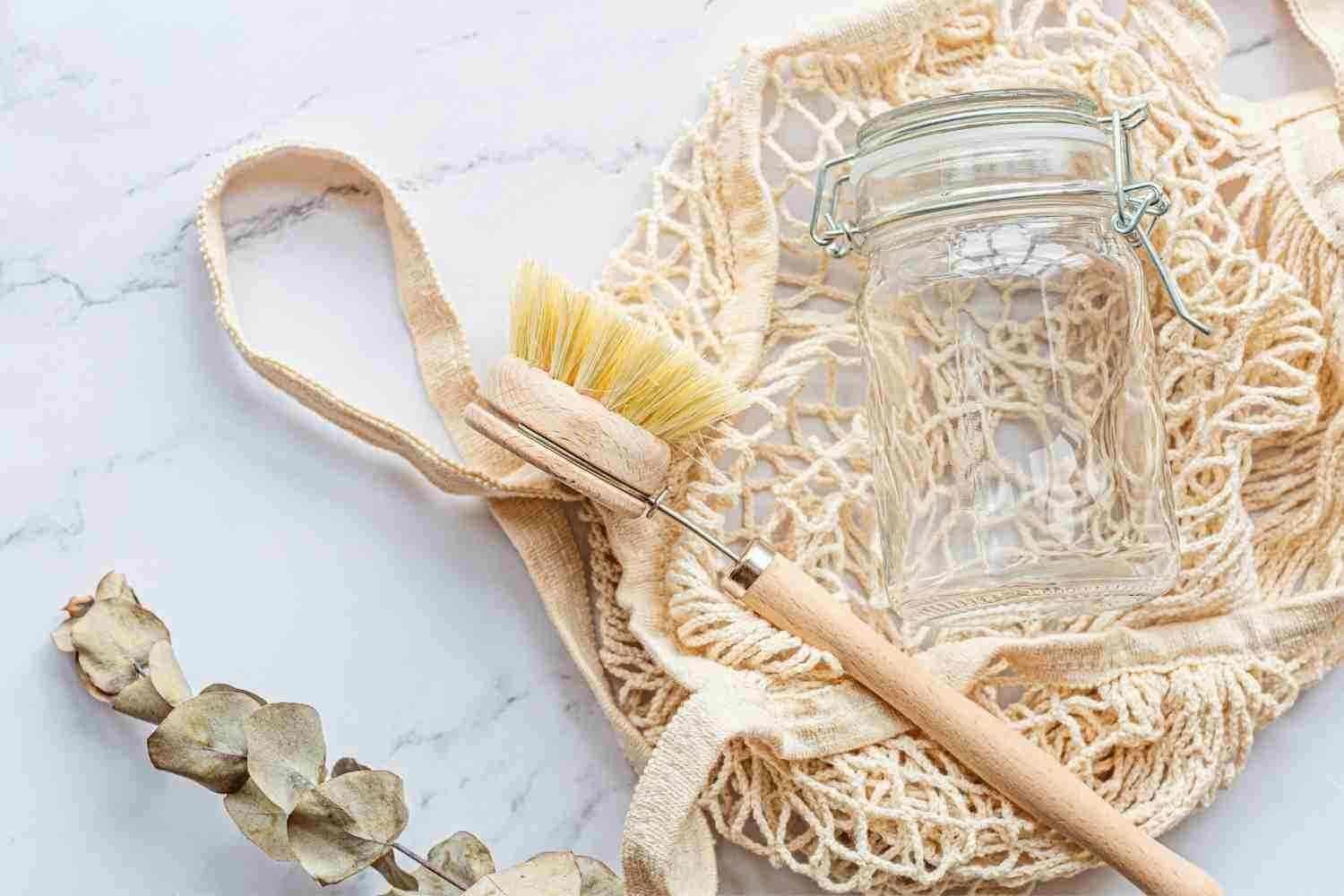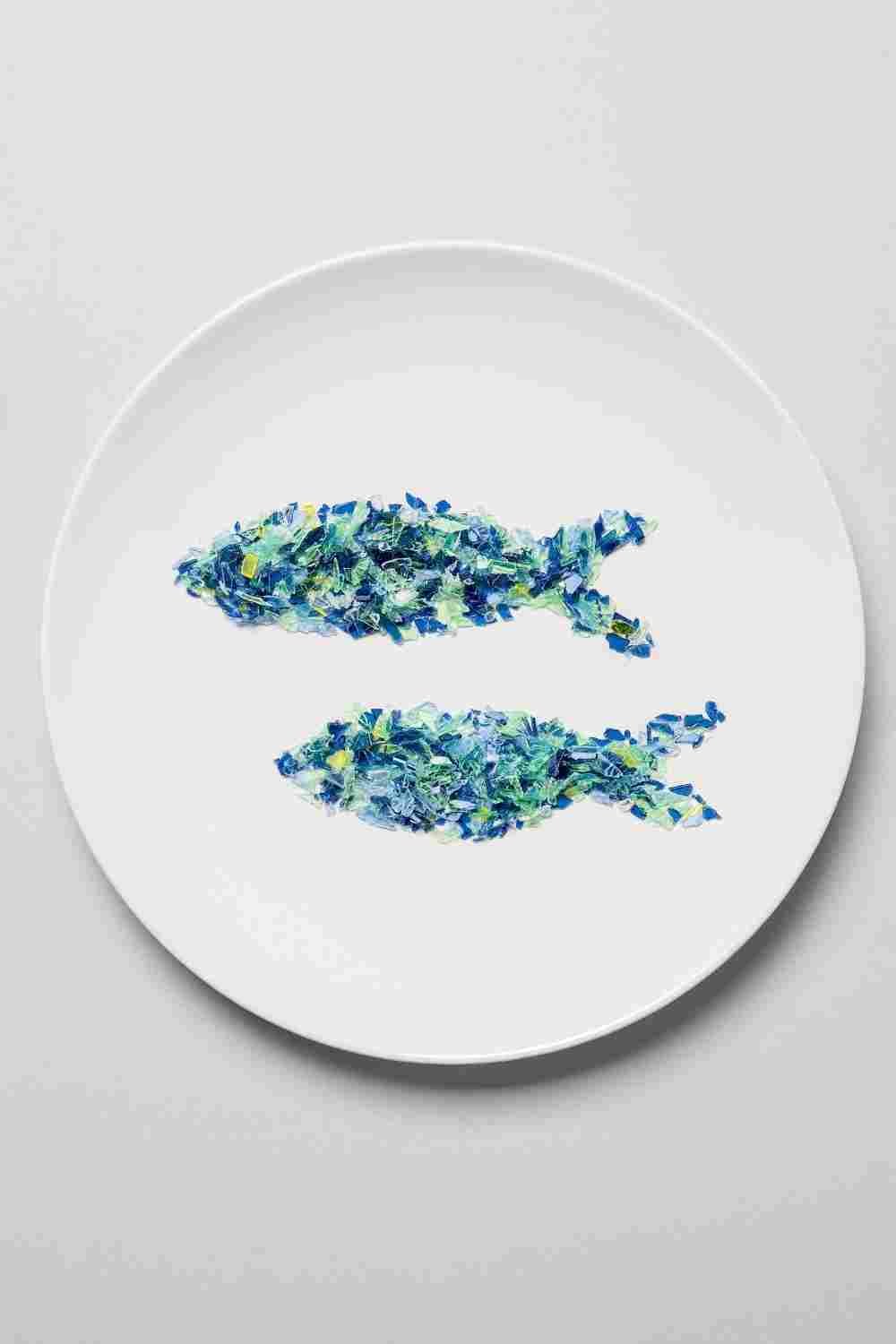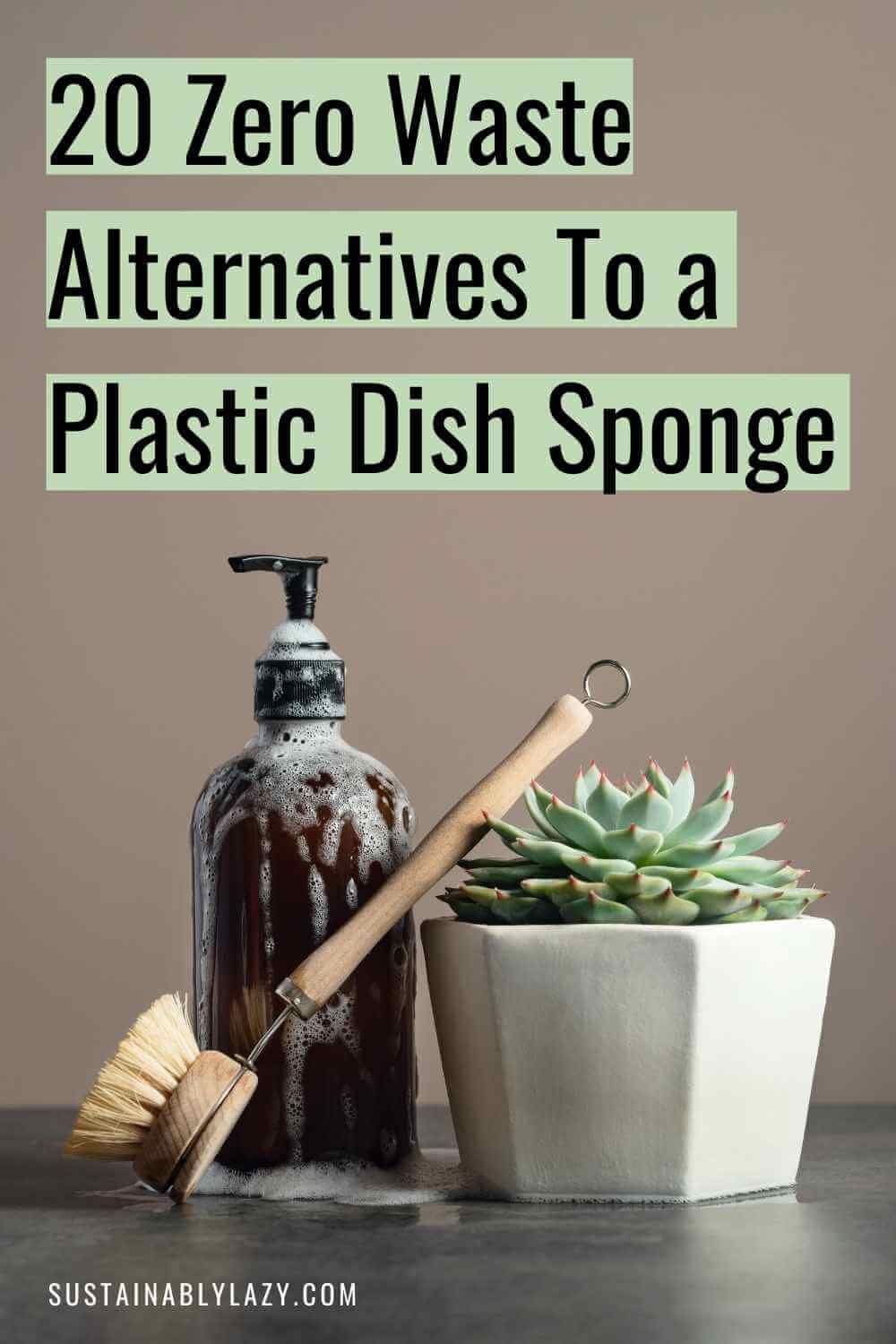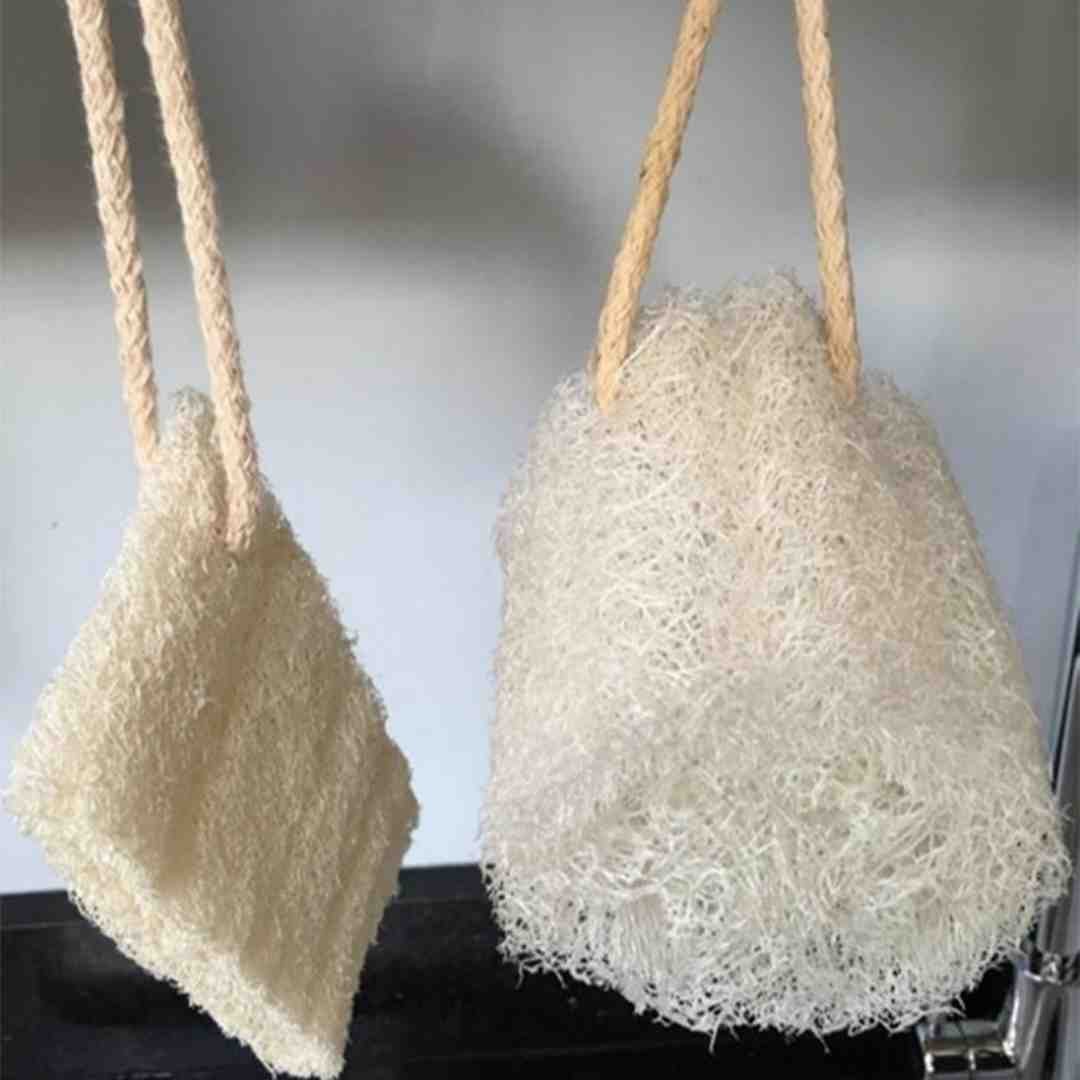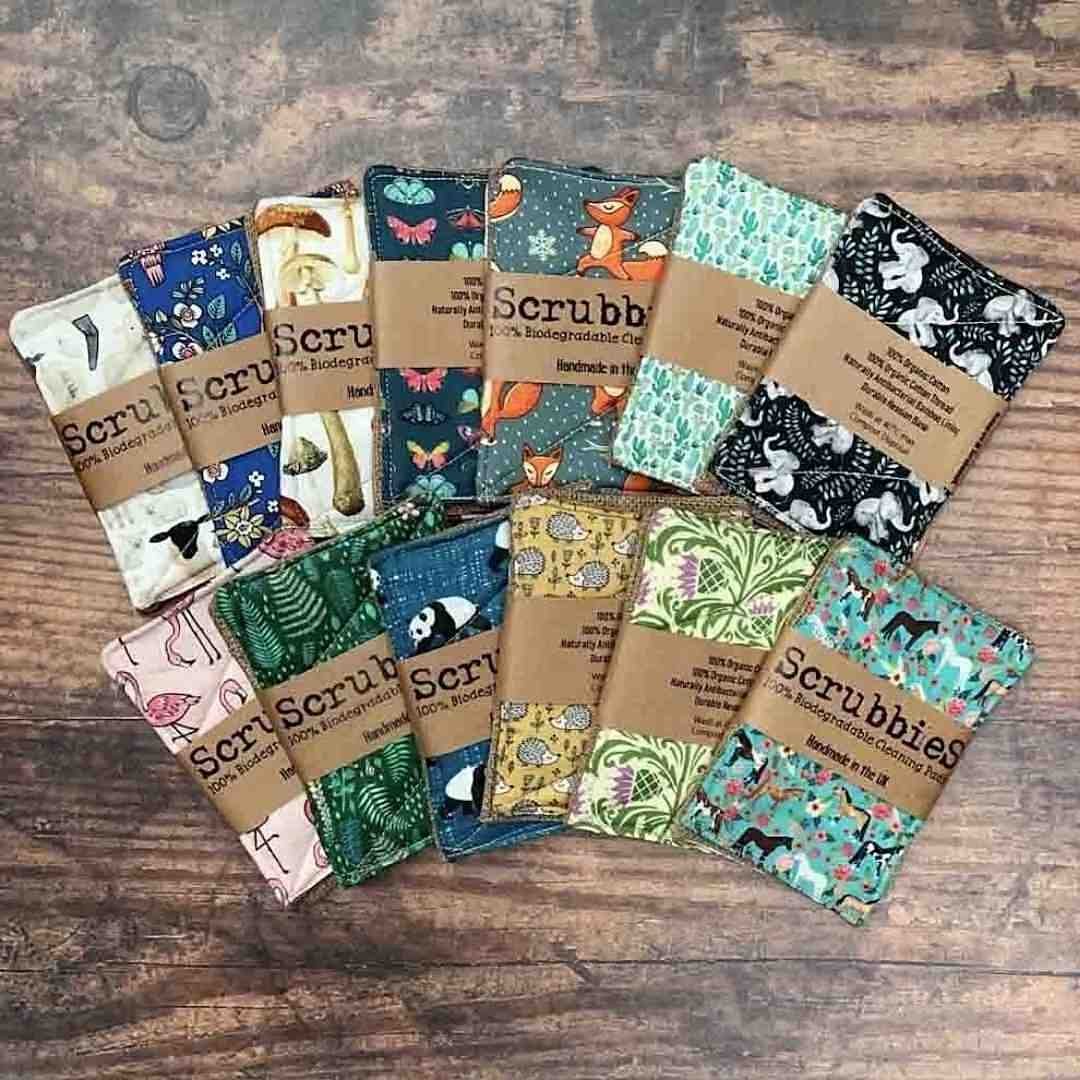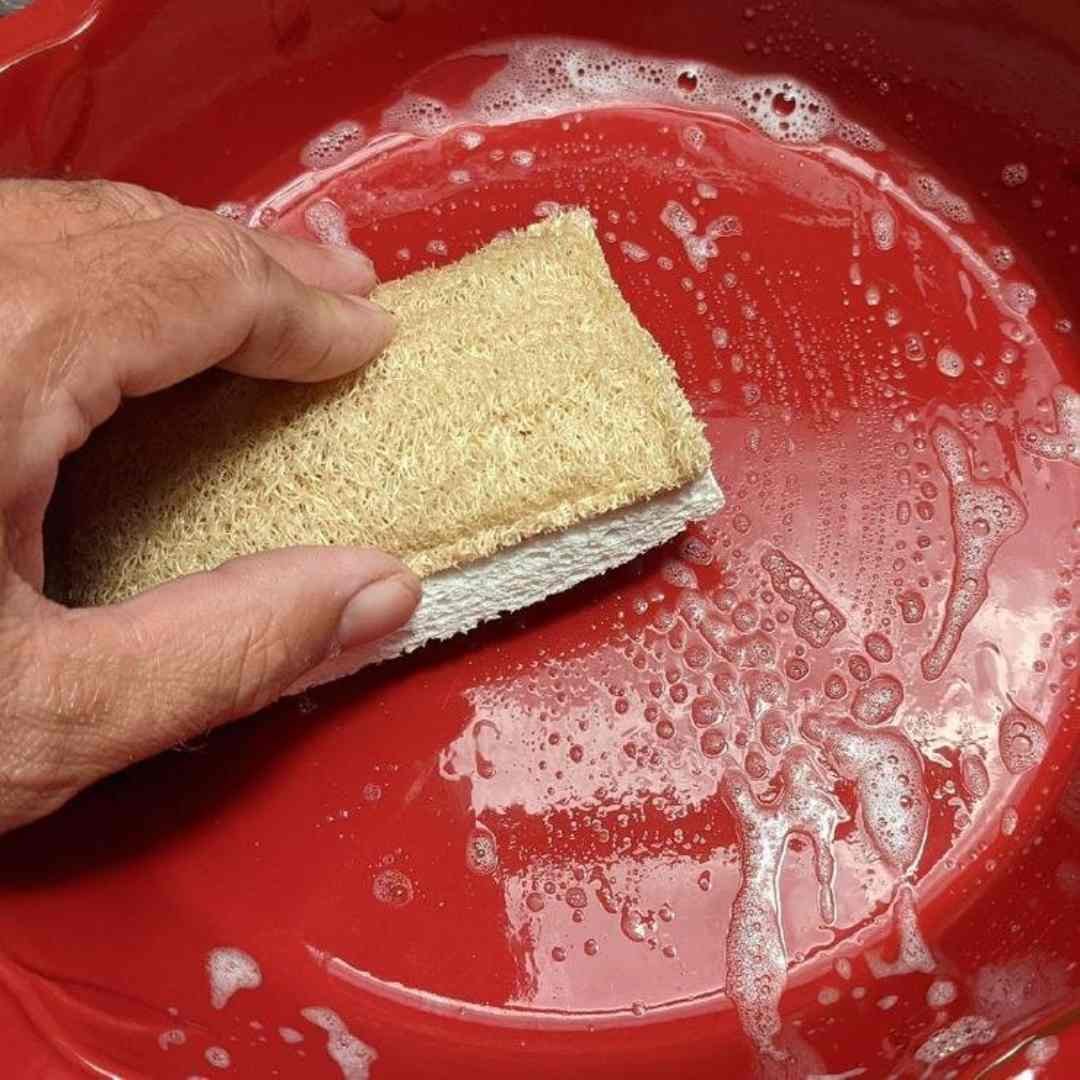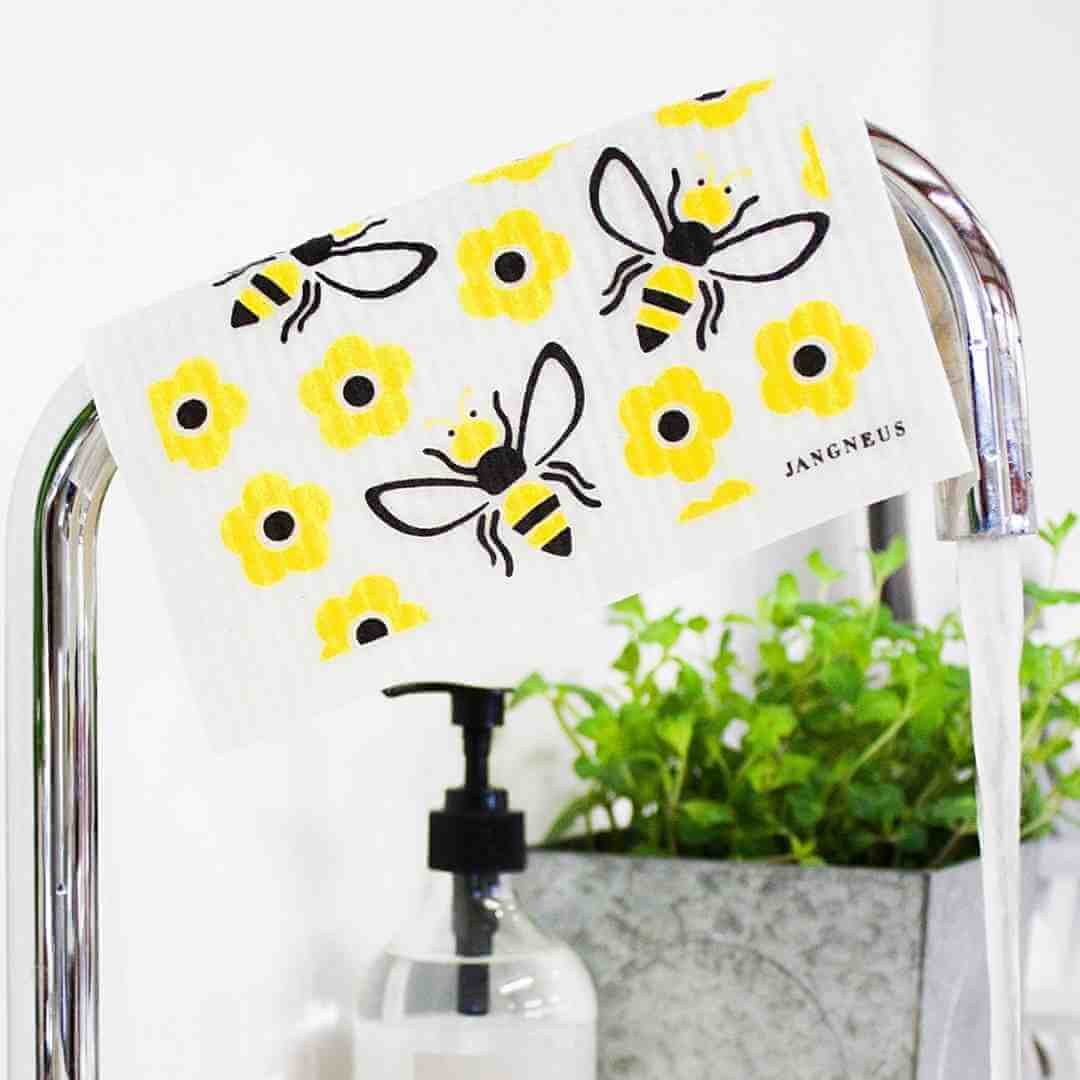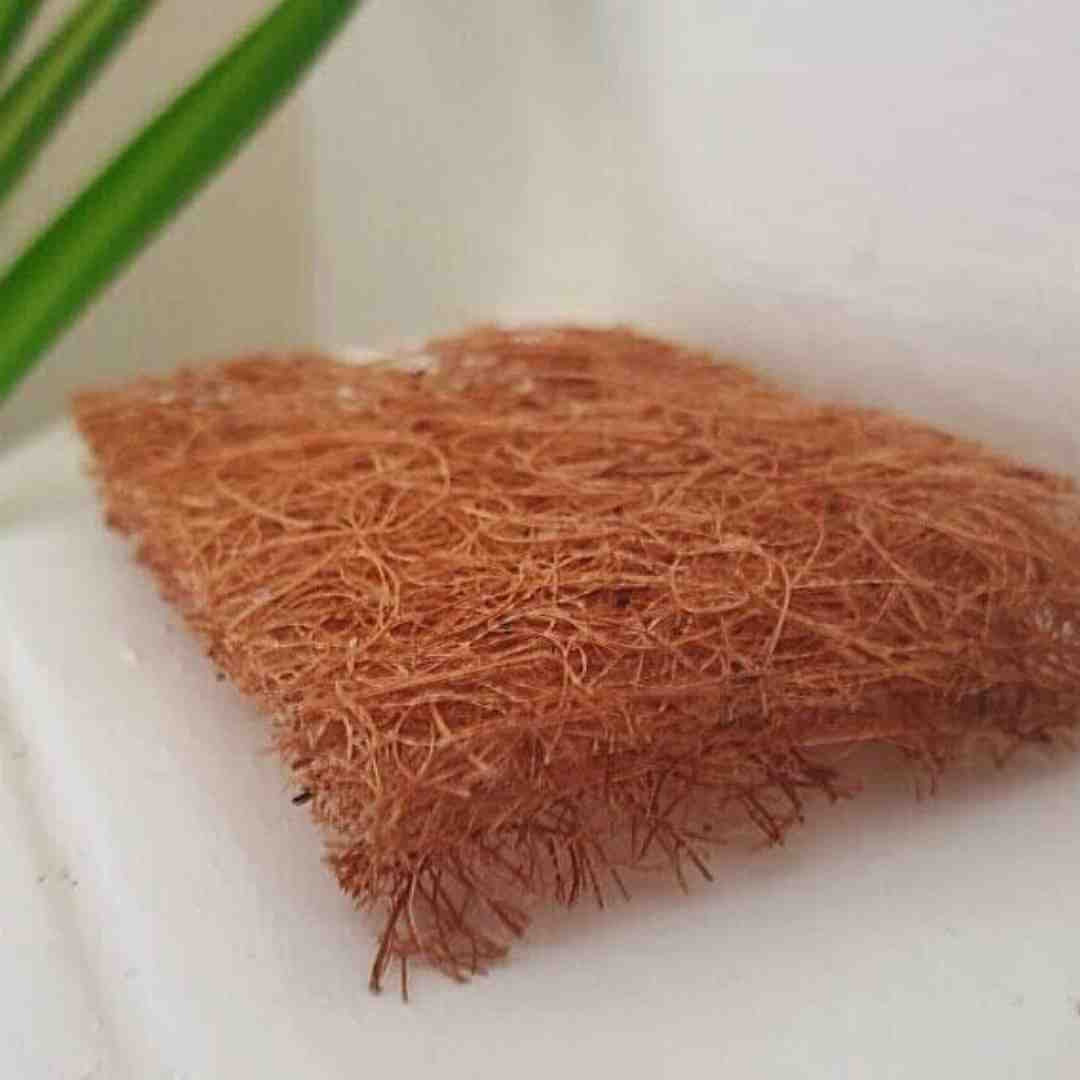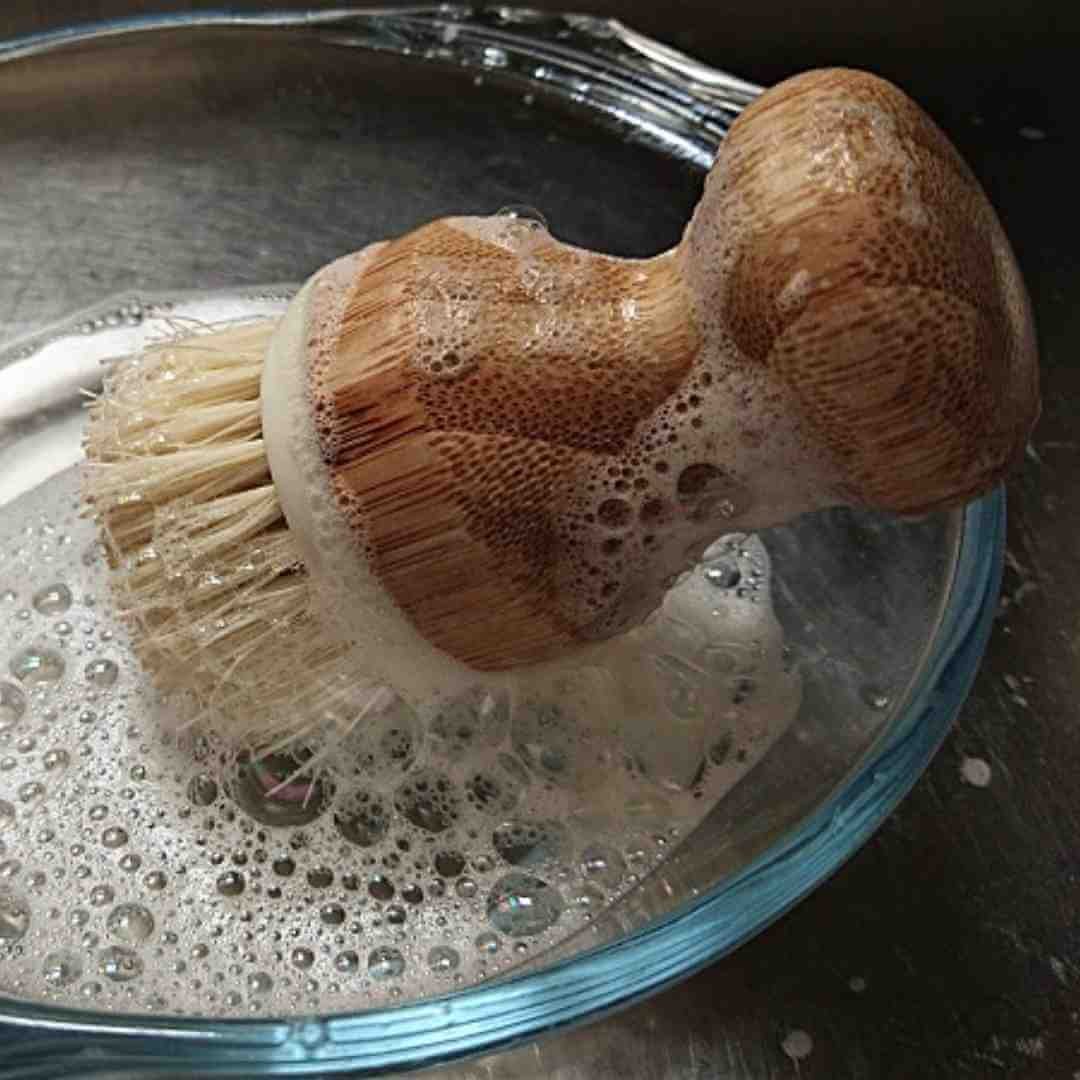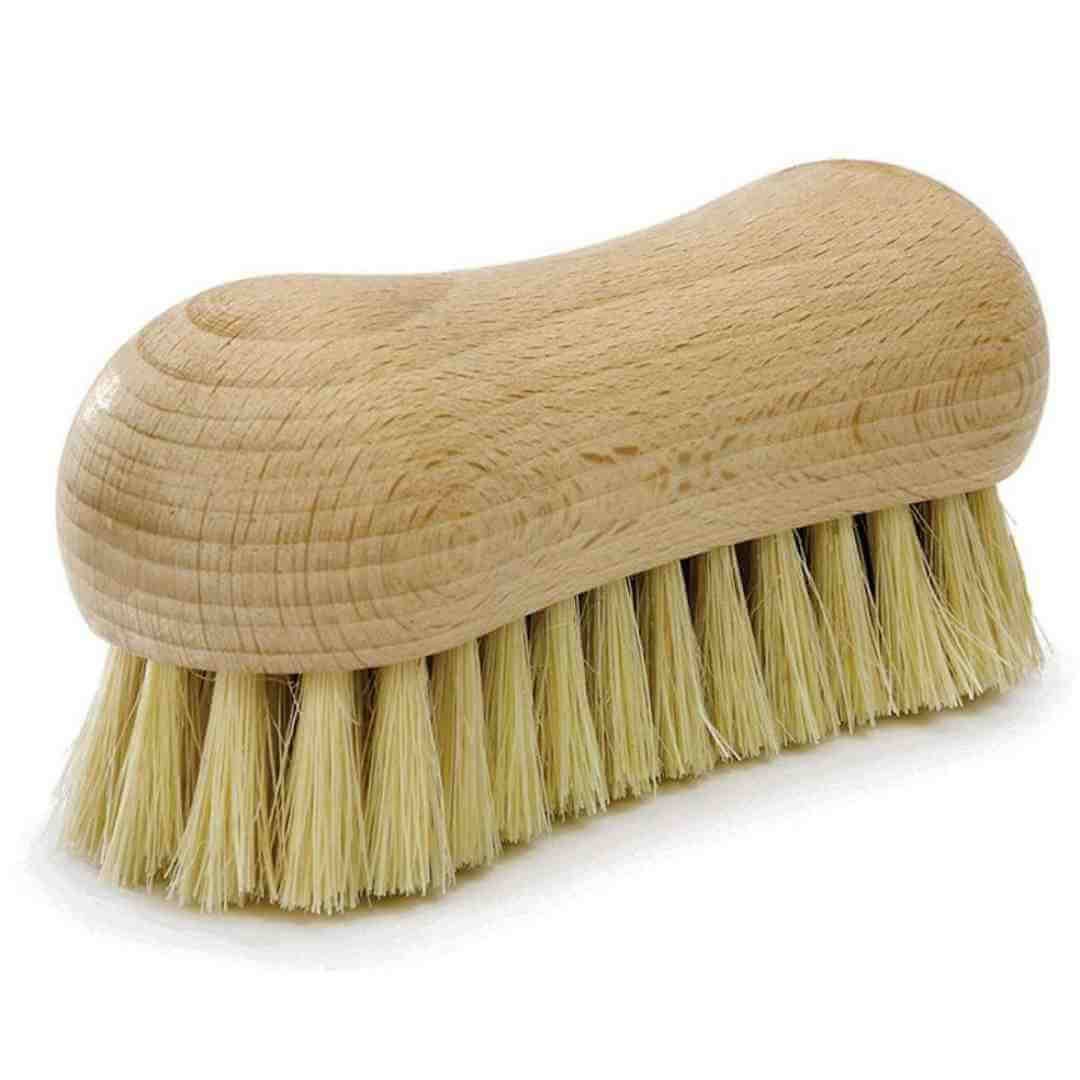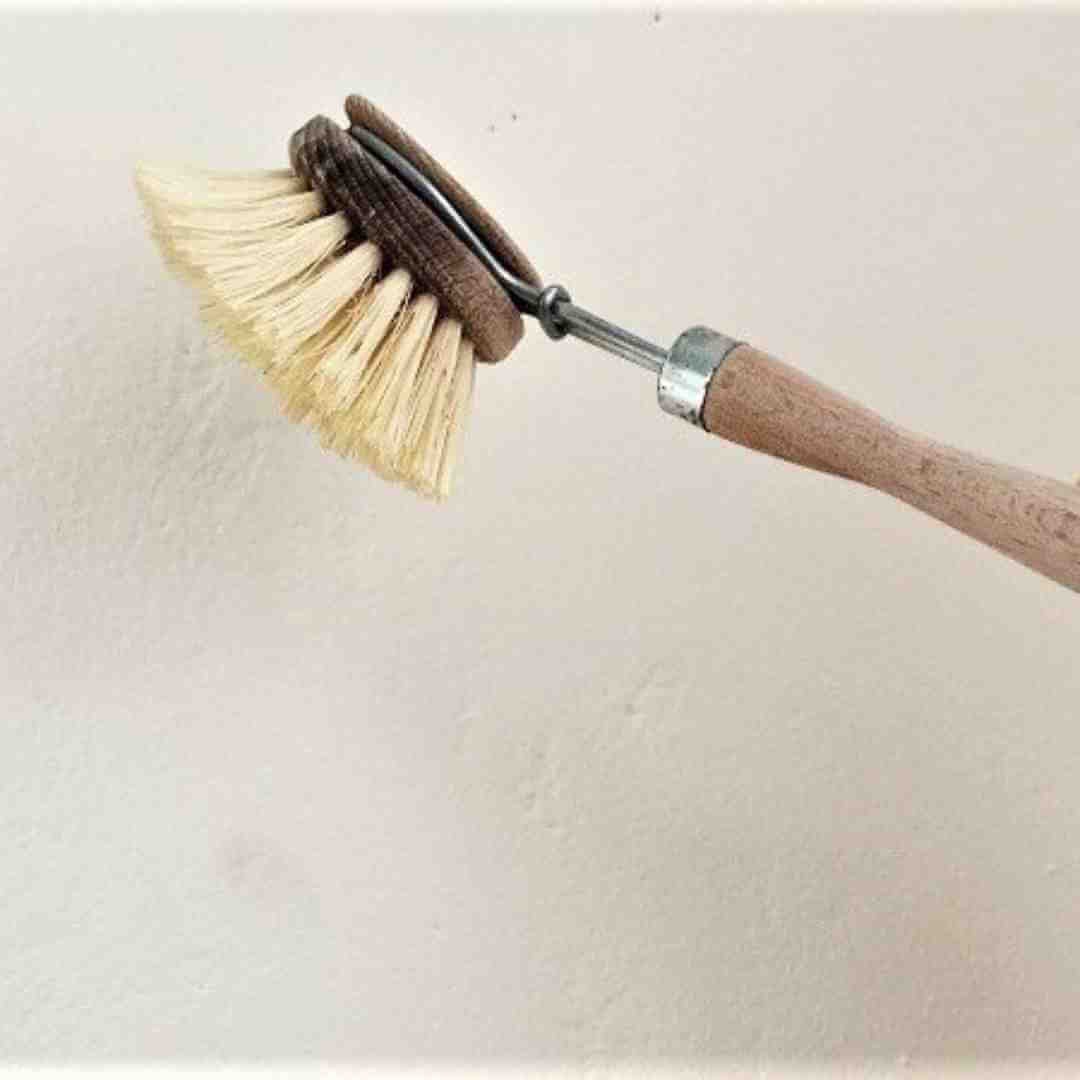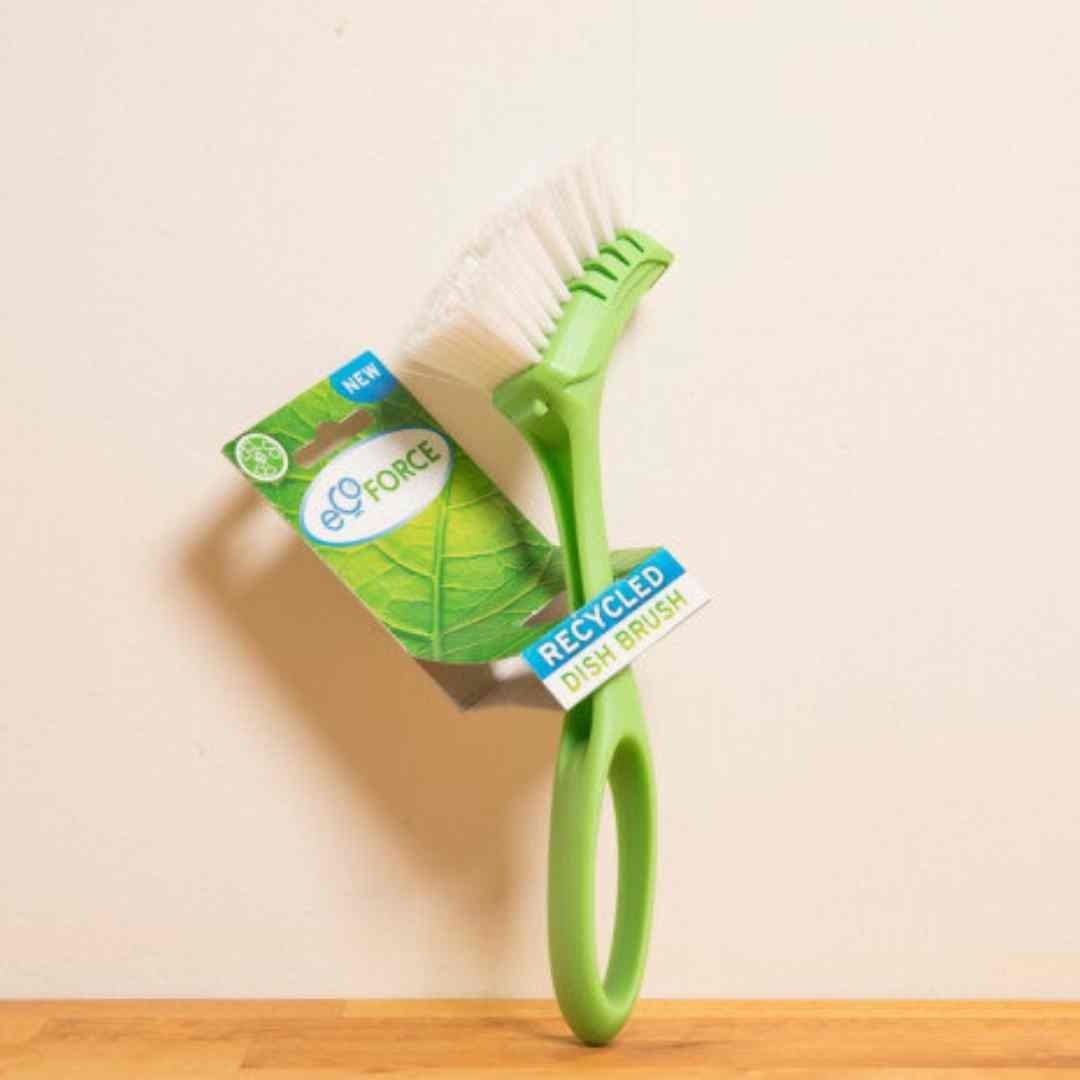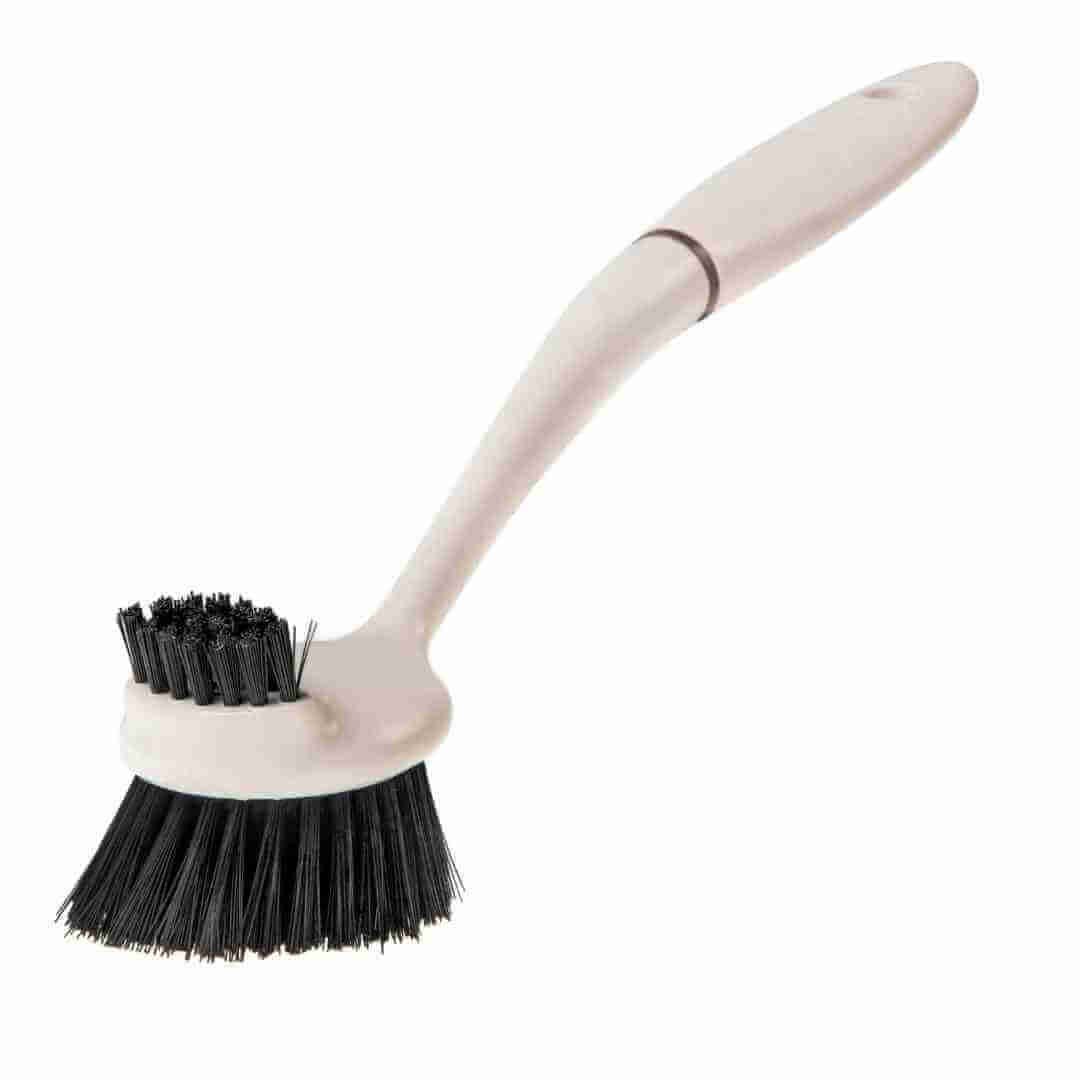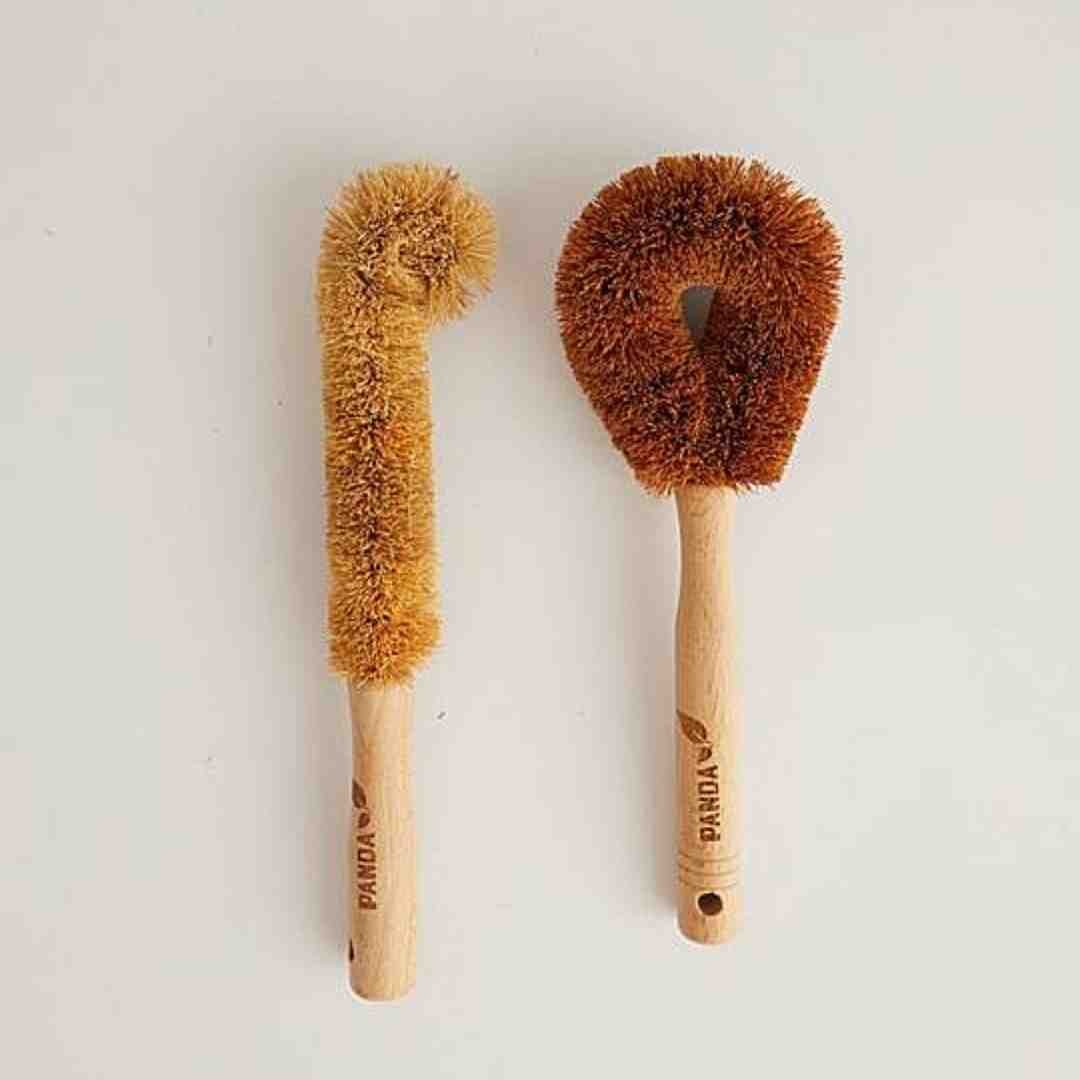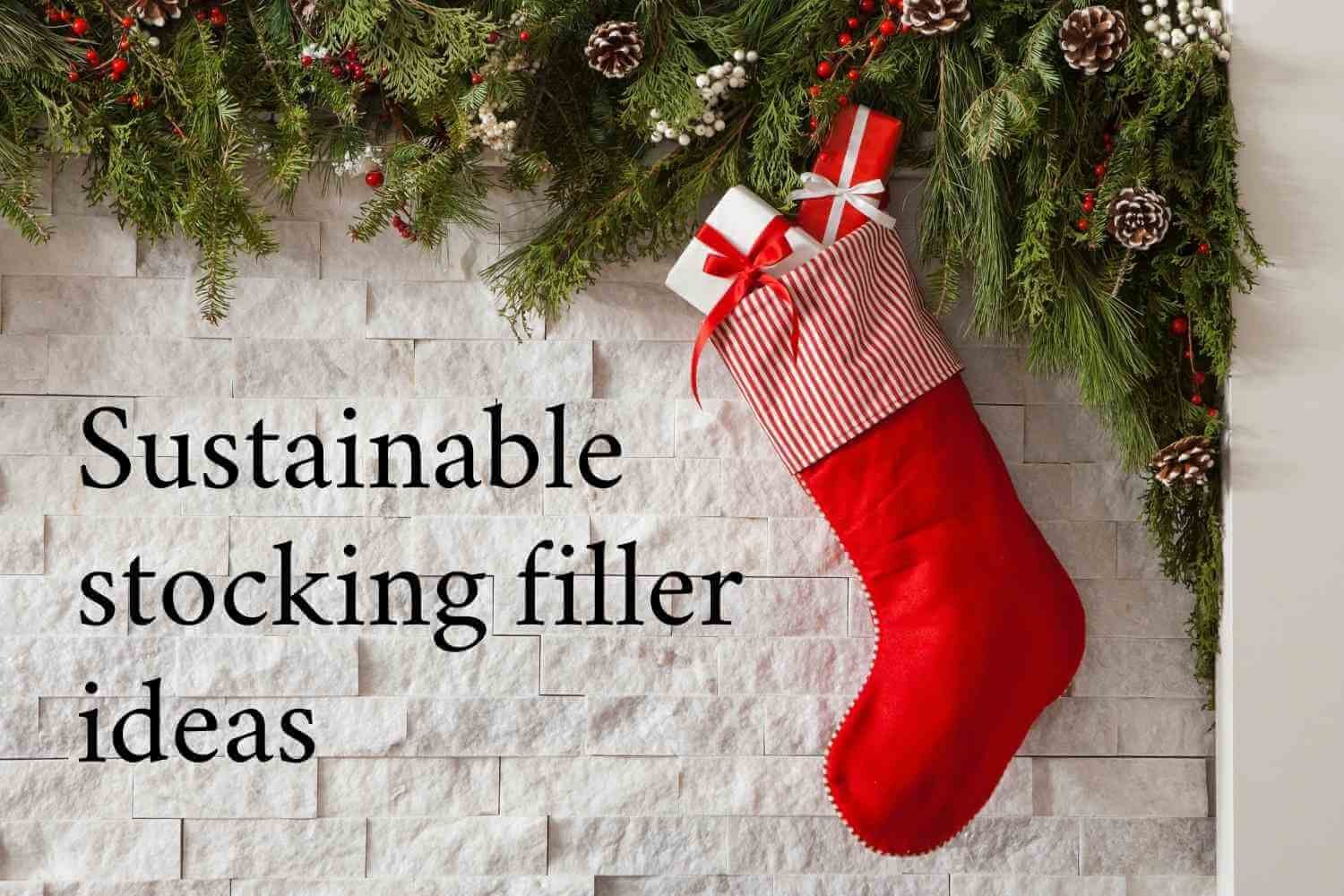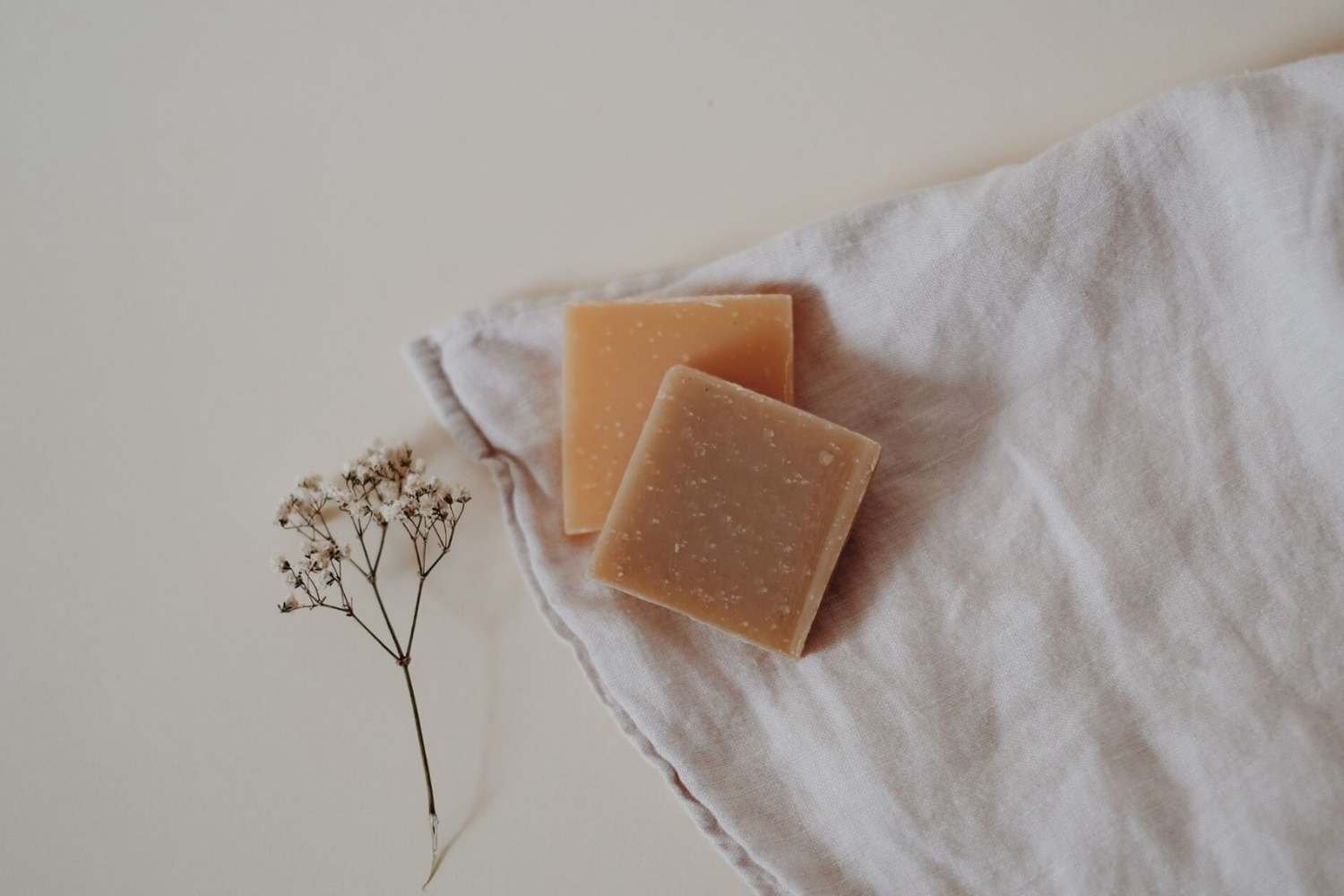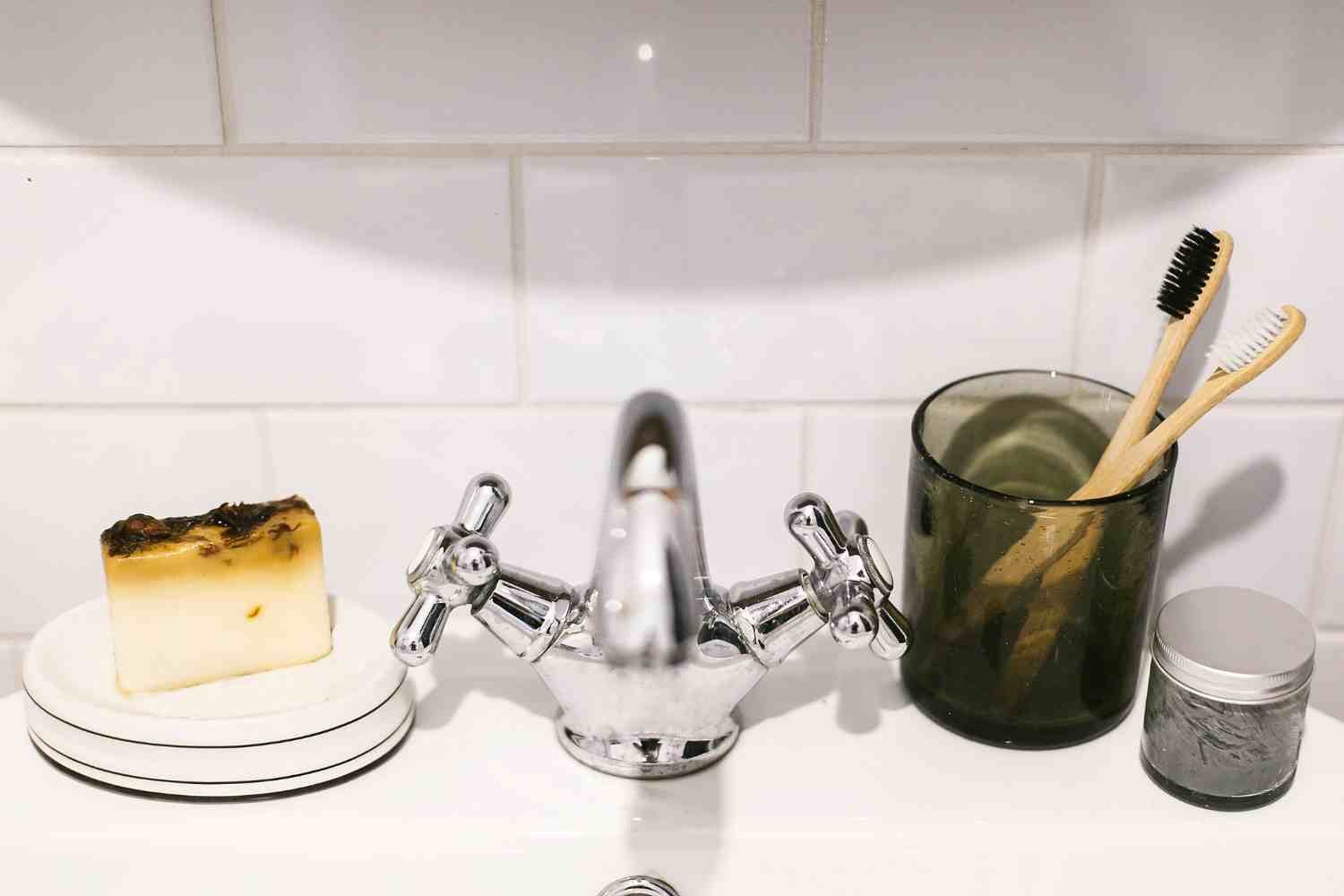20 Sustainable Alternatives to a Plastic Kitchen Sponge
This page contains affiliate links to sustainable retailers - all advertising is ethically-screened.
You may be feeling sceptical about plastic-free dish sponges (particularly if you don’t wash up straight after dinner).
Food coma anyone?
I’m definitely an I’ll-wash-the-dishes-if-you-roll-me-to-the-kitchen-and-give-me-a-chair-kinda-woman.
By the time you get to the dried-on-spaghetti pans and sauce-covered plates, you need a sponge that knows what to do.
A tough-love scrubber that can hit the spot, you know?
Is it possible an eco-friendly dish brush, made from 100% natural materials, can get the job done?
By the time you’ve checked out the 20 sustainable sponges and scourers I’m about to share with you, there will be more than enough knowledge in your brain to come to an informed decision.
But first, I’m going to explain the major problems associated with conventional washing-up sponges.
COMING UP
Are kitchen sponges eco-friendly?
Four Problems with conventional sponges
What can you use instead of a kitchen sponge to wash dishes?
20+ Eco-friendly alternatives to a plastic sponge in the UK, US and AU
Sustainable sponges
Plastic-free scourers and scouring pads
Eco-friendly dish brushes
Dish brushes with handles
1. Are kitchen sponges eco-friendly?
No, the sponges you usually buy for your kitchen are made out of a synthetic material derived from oil, basically plastic. This means they are not biodegradable and cannot be recycled. Thankfully, there are lots of eco-friendly alternatives that are just as effective.
2. The problem with conventional sponges
1. Microplastics
Those yellow and green sponges you’ve probably been using your entire life are made out of plastic. Every time you use that cheap, little sponge you are accidentally washing tiny particles of plastic into the sea.
This is because water filtration systems aren’t effective enough at filtering them out. The Chief Scientist for Ocean Conservation (George Leonard) estimates there are 1.4 million trillion microfibers in the ocean.
I don’t even want to know how many zeros that is.
The scariest part is that hazardous chemicals, such as pesticides, that are also in the water are absorbed into the microfibers, making them highly toxic… which brings me to the next point.
2. Fish = food
These sneaky, little microplastics, which are barely visible to the naked eye, are swallowed by sea creatures. The toxic chemicals that have been absorbed eventually cause liver damage in fish, birds and other coastal wildlife.
Scientists have found microfibers in 114 types of fish - half of those are eaten by humans.
They are trying to work out what that means for our health, but studies of this nature take a very long time.
It’s enough to put you off your dinner, isn’t it?
3. Landfill waste
These sponges are incredibly cheap and are often considered disposable. I’ve heard horror stories about people using a single sponge each day to avoid germs.
Sadly they are not biodegradable. I can’t even imagine how many synthetic sponges must be living inside landfills or polluting the oceans.
If you’re that person (we all have our eco-weaknesses so there’s no judgement here), luckily there are so many options nowadays that are biodegradable and kinder on the environment to produce.
There are naturally antibacterial options, and even sustainable sponges for those of you that love plastic sponges and would prefer an eco-friendly alternative.
4. Fossil fuels
Crude oil (and other fossil fuel) corporations are the biggest contributors to climate change. Oil is used to make plastic and other synthetic materials.
Not only is this catastrophic for the planet (look up BP’s ocean oil spill or the collateral damage of fracking for oil), but the greedy companies also cause their fair share of human rights abuses, like Shell, who are responsible for causing environmental genocide in Nigeria. Find out more about the current lawsuits against Shell here.
3. What can you use instead of a kitchen sponge to wash dishes?
If you want to make your kitchen more eco-friendly, there are lots of better alternatives to a plastic sponge. Depending on what you prefer, there are sponges and scourers made from natural or recycled materials. You can also opt for a dish brush or a scrubbing brush with a handle if you’d like to try something different.
I have divided my list into sections to make it easier to navigate.
Sponges
Scourers and scouring pads
Handheld dish brushes
Scrubbing brushes with handles
Due to popular demand, I’ve updated the post to include options for America and Australia.
20+ sustainable alternatives to your plastic dish sponge + brush
Loofahs
Quicklinks:
Loofco [UK]
Loofah 3 pack [US]
Organic loofah 6 pack [US]
A loofah is a plant-based sponge that is part of the cucumber family. It is hard when dry but when you get it wet it turns soft and expands.
They are a great alternative to sponges because they are made from natural, renewable materials but it is best to check they were harvested sustainably.
Pros:
Durable
Don’t scratch
Natural
Easy to wash and sterilise - you can simply boil them in a mug or jug to kill bacteria.
Cons:
Certain foods can get stuck in them, like chia seeds
Not a strong scourer
Ethical sellers:
A popular UK brand is Loofco; their products are handmade in Sri Lanka where employees receive fair wages.
They sell loofah sponges with a little handle on them and cleaning pads that have been sewn around the edges to make them tougher. The washing-up pad is flexible and can be squashed down into smaller spaces whereas the washing pads are stiff.
If you’re in the USA, Brush With Bamboo sells a 6 pack of loofahs grown traditionally in Guatemala. They are certified organic, vegan and have recyclable packaging. You can get 10% off at EarthHero with my affiliate code sustainablylazy.
Zero Waste Outlet offer a 3 pack of loofahs with a handy string, however, there are no certifications or information about origin.
Handmade sponges
Quicklinks:
Upcycled sponge [AU]
Scrubbies [UK]
Toockies [UK]
Two thoughtful ways to reduce plastic when washing up is to use handmade or upcycled sponges. Upcycling is a great way to create sponges from resources that already exist. The ones I’ve come across are from small businesses and work-at-home mums/parents.
Conventional plastic sponges are mass-produced without a second thought about the impact they have on the environment. By choosing handmade products, you know it was made intentionally and your money isn’t going to a billionaire CEO of a faceless company.
Pros:
Durable
Supports small business
Natural - no microplastics
Easy to wash and sterilise - you can simply boil them in a mug or jug to kill bacteria.
Cons:
Like normal sponges, you’ll need to sterilise them to prevent bacteria growth
Pricier than plastic sponges
Ethical sellers:
If you’re in Australia, Biome sells heavy-duty sponges made from Fairtrade jute coffee sacks.
In the UK, Scrubbies washing up pads not only look great thanks to their cheerful designs but are also made to be compostable at the end of their life.
Another ethically-made brand is Toockies who sell Fairtrade jute and organic cotton cleaning cloths in India. The women are given flexible working conditions and free healthcare for their children and they even include the name of the woman who made it on the packaging.
Cellulose sponges + scourers
Cellulose, made from wood fibres, has a much less toxic manufacturing process than synthetic materials. It’s an ideal product if you want a 100% plastic-free option with no hidden polyester.
The only flaw is that some brands aren’t as hard-wearing as a synthetic sponge and they don’t last as long if you put them in the washing machine (dishwasher, microwave or boiling is fine for sterilising them though).
There are also brands that have got creative by designing eco-friendly sponges that have a mixture of cellulose and different sustainable materials to replicate the conventional sponge-scourer style.
Pros:
Don’t scratch
Easy to sterilise - boil them in a mug or jug to kill bacteria.
Cheap
Cons:
Less durable than other options
Can’t go in the washing machine
Not a strong scourer
Sponges:
In the UK, Eco Sal sells packs of two 100% cellulose sponges.
Sponge/scourers:
In the US, EarthHero sell a sponge scourer made from cellulose and walnut shells
Zero Waste Outlet has added a layer of loofah onto its cellulose sponge to act as a scouring pad.
In Australia, you can get scrubbers made from cellulose with a recycled plastic scouring pad attached from Nourished Life.
In the UK, Sonnett has designed an eco version of mainstream sponges made from cellulose with a scouring pad made from sisal and recycled plastic.
Unfortunately, options with recycled plastic risk shedding some microfibers.
Natural + sustainable dishcloths
Quicklinks:
Sponge cloth [UK]
Sponge cloth [US]
Sponge cloth[AU]
A dishcloth is something that I’ve had in my home since childhood. It can be used for washing up and cleaning the kitchen, dining room and any areas where food is consumed.
Did you know dishcloths are another item that is made from unsustainable materials, like synthetic polyester or microfibre which are made from petrochemicals and shed microfibres into the ocean?
Natural materials aren’t always better either. Cotton uses an abundance of toxic pesticides in developing countries where working conditions are not always safe. It is also linked to the genocide that is happening in China (click here to learn more about this serious issue).
Thankfully, it is easier than ever to find cloths made out of more sustainable materials in 2021.
Pros:
Simple
Natural
Multi-purpose
Cons:
Check manufacturer guidelines before putting in washing machine
Not a strong scourer
Lack of transparency in material sourcing
Ethical sellers:
For several months I’ve been trying out Swedish dishcloths from Ethical Superstore which are made from cellulose and can be put in the home compost at the end of their life.
Cellulose is hard when dry and soft when wet and so far they are lasting a long time. I am washing them in the washing machine and the picture has faded a bit but this hasn’t affected use.
In the US you can buy Swedish dishcloths from Zero Waste Outlet
And in Australia, you can get them in Biome stores.
Coconut Scrub Pad
Photo: Safix compostable scrub pad.
If an eco-friendly scourer you can pop in your home compost when it’s at the end of its life is something that appeals to you then the Safix scrub pad might be just what you’re looking for.
It is made from coconut fibres and is 100% plastic-free. Because it is created using the hair of the coconut (which is bound by latex), it doesn’t scratch at all.
As a lazy person who doesn’t wash up straight away, I did find it less effective than some of the other options, but I do know a few people who like it. Therefore I am of the opinion that if you are less lazy than me it could work for you.
I have now cut mine in half and repurposed it into a shampoo bar and soap bar holder so it wasn’t a waste.
Pros:
Durable
Don’t scratch
Natural
Easy to wash and sterilise - you can simply boil them in a mug or jug to kill bacteria.
Cons:
Not a strong scourer
Not flexible
Coconut doughnut scourer
Quicklinks:
Bower Collective (UK)
Ethical Superstore (UK)
Biome (AUS)
Zero Waste Outlet (US)
Commonly seen on sustainable Instagram accounts, Ecococonut scourers are highly-rated.
Handmade in Sri Lanka from coconut fibres wrapped around a metal wire by workers that are paid fair wages for their traditional skills.
These strong, fibrous strands, often called coconut husk or coir, are found on the outside of the hard inner shell of coconuts.
Even though a lot of people like these, I decided not to buy them after not liking the Safix scrub pad so I can’t give you any feedback on it, however, there are lots of reviews on the product page.
Eco-friendly dish brushes
The short-handled brushes in this section are made from natural materials, like wood or bamboo with plant-fibre bristles. Some options, like Full Circle, use recycled plastic bristles. They are all fairly similar so it depends on what shape you would prefer to hold.
Bamboo dish brush
Quicklinks:
Full Circle dish brush - recycled PET bristles [US]
ZW dish brush - natural bristles [US]
Sisal dish brush [AU]
Bamboo is a fast-growing plant that doesn’t require pesticides to grow and it absorbs more carbon than a tree, which makes it one of the most sustainable materials.
Handheld dish brushes are ideal for tough dried-on food residue and for cleaning pots. They are easy to hold, clean effectively, and last a long time. I keep mine clean by washing it in hot soapy water and sterilising it by placing it in a mug of boiling water. You could also use Milton tablets.
Pros:
Last a long time
Easy to sterilise - pop into a mug of boiling water to kill bacteria.
Good at removing most food
Cons:
Some have synthetic bristles
Ethical sellers:
This handheld bamboo dish brush by Panda Packaging is excellent (even my partner is a fan). Eddington’s makes a plant-based pot brush. with stiffer bristles.
In the US, there is a very similar version by a brand called Full Circle. Their bristles are made from recycled plastic. It is also available as a set with a ceramic soap dispenser.
Or if you’d prefer natural bristles, Zero Waste Outlet have chosen sisal bristles (from the agave plant) with the option of a three-piece set.
In Australia, Biome sells its own brand which also has sisal bristles. You can also buy a dishwashing set that includes castile soap and a storage dish.
Wooden scrubbing brush
Quicklinks:
Eddington’s Valet [UK]
Redecker [US]
Similar to the last option but more ergonomic, wooden scrubbing brushes may work for you if you want a sturdier grip. These brushes are versatile and strong so could easily be used to clean different areas of your kitchen.
They are made from FSC wood with vegan plant fibre bristles. I double-checked and they are home compostable.
Ethical sellers:
Eddington’s ergonomic brush has vegan bristles made from plant fibres. You can buy it from Ethical Superstore in the UK.
In the US, EarthHero sells a similar product by Redecker who have created their brush using untreated beechwood and natural Tampico fibres.
Plant Fibre Dish Brush
This dish brush is probably the most popular eco-friendly alternative.
I’m gonna be honest, I originally bought this brush because it looked visually pleasing (I know… priorities). Luckily I’m a big fan.
I love the handle - it’s lightweight and easy to hold. You can wash up without getting your hands wet and the bristles get in all the nooks and crannies.
It is made from bamboo or FSC-certified wood and has vegan, plant-derived bristles. Once they’ve finally worn out you can take the head off the handle and replace it separately, saving yourself a bit of money (it’s home-compostable too).
I’ve just changed the head on mine again so I snapped a photo to show you how simple it is (see above photo). It just slots on and stays firmly in place.
The only downside is the wooden ones need to dry out properly in between uses and after some time the wood starts to go dark (as seen in photos). I’ve used both Eddington’s and EcoLiving. The bamboo option is more expensive but it may last longer. There are also brands getting creative with handles made from more durable materials, like metal.
Pros:
Replaceable heads save money and resources
Easy to hold
Easy to sterilise - put them in a mug or jug of boiling water to kill bacteria.
Cons:
The wood isn’t chemically treated so over time gets darker and damp. The one in the photos above ended up cracking after a year and needed replacing
Buy in the UK:
Best: Ecoliving (better wood and screw top heads)
EcoLiving (cheaper one)
You can also buy this dish brush as a set, with a block of dishwashing soap, a soap rack and two sponges, but I wouldn’t recommend using soap with hard water as you may be left with soap scum on your dishes.
Buy in the US:
Buy in AUS:
Recycled washing up brush - UK only
Ecoforce has designed a dish brush with a handle from recycled plastic.
This scrubber is suitable for:
People who are happy with their current setup but want to be more conscious of the environment.
People who dislike coconut or wooden cleaners.
Anyone looking for a budget option (cheaper than the plant-derived options).
You can also purchase replacement heads when needed to cut costs and reduce your waste.
I haven’t bought this one because I prefer natural materials and there is still a small percentage of virgin plastic in it. However, the reviews are good so I’ve included it as an option for people on lower incomes.
Greener Dish Brush (UK)
These fancy brushes are made from a material known as “Eco-Flex” which Green Cleaners designed to reduce plastic waste in landfills. Eco-Flex is made from 50% recycled plastic and 50% wood pulp.
You have to appreciate a bit of creativity, huh?
This product is similar to the last option only it is free from virgin plastic making it more sustainable.
They are cheap and come in a range of different styles, but unfortunately don’t have the option for replacement heads.
I’ve recently tried this product and I like it a lot. It is easy to hold and durable.
Redecker Curved beechwood dish brush
Redecker has designed a curved version of a plastic-free dish brush. Its handle is made from solid wood and the natural bristles are made from Tampico fibres.
Redecker products are ethically made in Germany from sustainable beechwood. Please note, this product has a leather strap for hanging up so is not vegan.
Where to buy:
&Keep (UK)
EarthHero (US)
Bower Collective (US)
bottle brushes
Put your hands up if you or your partner have big hands and struggle to squeeze a sponge into the bottom of a glass, jar or bottle.
Bottle brushes are similar to dish brushes with handles only they are a slimmer shape, designed for cleaning awkward small places.
Please help spread the word of easy eco swaps by giving it a share and letting me know how you get on in the comments. You can also support my content by buying me a coffee.
What’s your next eco swap?

